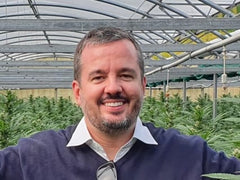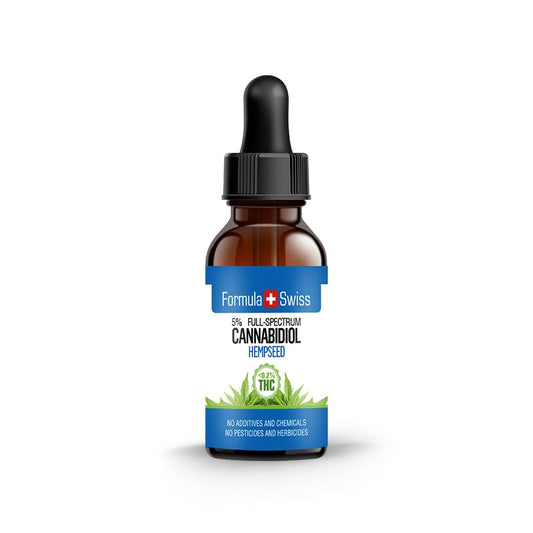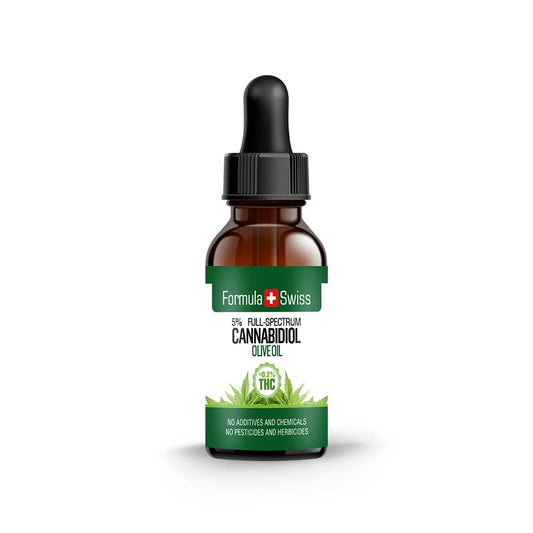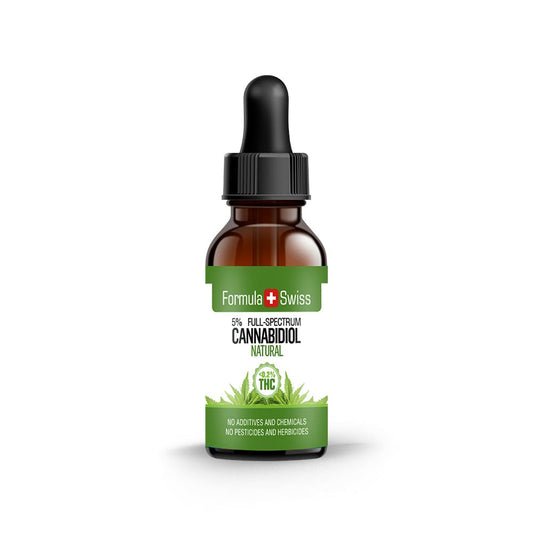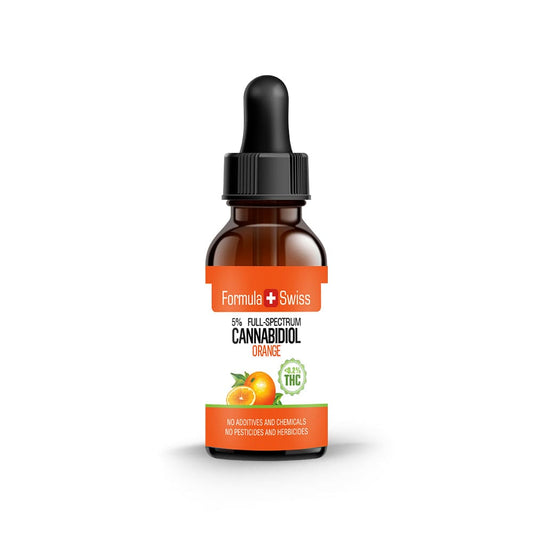CBL, or cannabicyclol, is one of the lesser-known cannabinoids that naturally form in cannabis over time. It comes from the breakdown of CBC (cannabichromene), often triggered by light, heat, or simply age. It’s one of the lesser-known ones and usually shows up as cannabis ages.
What’s interesting is that it doesn’t start out that way — it forms when CBC (cannabichromene) breaks down, often after exposure to light or heat. In my experience, I’ve noticed CBL turn up more often in lab tests on older batches or products that have been stored for a while.
It’s rarely present in large amounts, but when it is, it can hint at how the product’s been treated or how long it’s been sitting around. These little markers often tell a bigger story if you’re paying attention. Think of it like stumbling across an old postcard tucked in a drawer. It might not be the main event, but it still says something about the journey.
CBL doesn’t usually get the spotlight, yet it plays its part in helping us understand how cannabis evolves over time.
Key takeaways
- CBL is a minor cannabinoid found in cannabis with non-psychoactive properties.
- Unlike THC, CBL does not produce a 'high', highlighting different cannabis compound uses and effects.
- Properties of CBL are still largely unexplored, making it an intriguing subject for further research.
- CBL is often discovered in aged cannabis, suggesting a unique process of formation and degradation.
- Understanding the chemical structure of CBL is crucial for grasping its role within the broader cannabinoid spectrum.
This article is provided for informational purposes only and does not relate to any of the products available in our webshop. For more information, please see our full disclaimer.
Introduction to cannabinoids and CBL (Cannabicyclol)
Cannabinoids make up a wide and often complex group of compounds found in the cannabis plant. While many people are familiar with THC and CBD, others like CBL are now beginning to draw attention. Each one brings its own characteristics and contributes differently to the overall profile of the plant.
Understanding cannabinoids: From THC to CBD
Cannabinoids are the active compounds found in cannabis that interact with the body. THC is commonly known for its mind-altering effects, whereas CBD is often associated with a more balanced, non-intoxicating experience.

These compounds influence how we respond to cannabis by interacting with a system in the body that plays a role in processing sensations and mood.
The discovery of CBL (Cannabicyclol)
The discovery of CBL marked a meaningful development in the study of cannabis compounds. It was first identified in 1964 when Korte and Sieper isolated a substance they initially referred to as "THC III", based on its early resemblance to tetrahydrocannabinol (THC).
Later work in 1967 led to a more detailed analysis, where the compound was correctly identified and given the name cannabicyclol (CBL). Rather than being found in large amounts in fresh cannabis, CBL tends to appear gradually as cannabichromene (CBC) breaks down through exposure to light and air.
Order and enjoy up to 30% off your CBD oil purchase
Comparing major and minor cannabinoids
The cannabis plant contains a wide variety of cannabinoids, including both major and minor types. Each one plays its own part in shaping the overall character of the plant and the experience it can offer. Here's a comparison:
| Cannabinoid | Type | Psychoactive properties | Observed characteristics |
|---|---|---|---|
| THC | Major | Yes | Often linked to altered perception and heightened sensory awareness |
| CBD | Major | No | Commonly associated with a calming or grounding effect |
| CBL | Minor | No | Still being studied; typically appears in aged samples |
| CBN | Minor | Mild | Often found in older cannabis, noted for its gentle presence |
Compounds like THC, CBD, and CBL each bring something different to the table, and there’s still so much to learn about how they behave. I’ve noticed growing interest in CBL and other lesser-known cannabinoids lately, especially as researchers dig deeper into the finer details of the cannabis plant.
Chemical structure of CBL
Cannabicyclol (CBL) is an uncommon, non-intoxicating cannabinoid with the molecular formula C₂₁H₃₀O₂ and a molecular weight of around 314.47 g/mol. Unlike tetrahydrocannabinol (THC), CBL contains no double bonds in its structure, which is thought to play a role in its lack of psychoactive effects.

It develops as a breakdown product of cannabichromene (CBC), typically forming when the plant is exposed to light, heat, or acidic conditions over time. What makes CBL particularly distinctive is its fused-ring structure. Although it shares the same molecular formula as THC and CBD, the way its atoms are arranged is different.
This variation gives CBL its own set of chemical characteristics, setting it apart from more widely studied cannabinoids.
| Cannabinoid | Presence in cannabis | Psychoactive properties | Chemical similarities |
|---|---|---|---|
| CBL | Trace amounts | None | Similar to CBN but lacks certain double bonds |
| CBN | Formed as THC oxidises | Mild | Retains some double bonds integral in THC |
From my perspective, findings like these can lead to fresh areas of exploration and move cannabinoid research in new and exciting directions.
Minor cannabinoids: CBL, CBN, CBC, and THCV
Cannabis offers much more than just THC and CBD. Over the years, I’ve come across several lesser-known cannabinoids like CBL, CBN, CBC, and THCV, each with its own structure and character. These compounds don’t behave the same way, and that’s what makes them so interesting.
Take CBN, for example — it often shows up in aged cannabis and tends to produce a gentler experience. CBC is another one I’ve seen gaining attention, particularly when people are curious about its subtle presence. Then there’s THCV, which I find fascinating because it seems to work quite differently from THC.
CBL doesn’t get talked about as much as the others, and its effects aren’t as well documented just yet. Still, I believe there’s real value in continuing to explore it. In this section, I’ll share what I’ve learned so far about these minor cannabinoids and how they might interact with the body.
Differences in chemical structures and effects
A cannabinoid’s shape, meaning its actual structure, plays a big role in how it interacts with us. THCV is a good example. While it looks a lot like THC at first glance, it doesn’t seem to bring about the same hunger-related response. As for CBL, it shares some similarities with better-known cannabinoids but lacks the intoxicating effect.
That’s one of the reasons I find it so compelling. It could have applications in situations where clarity and focus are more important.
Which cannabinoids produce a psychoactive effect?
Examining the potential of CBL
The role of CBL is still being figured out. From what I’ve seen so far in early lab work and conversation with others in the field, it’s shaping up to be worth further study. The fact that it doesn’t produce a high makes it even more interesting in situations where a clear-headed result is preferred.
Order CBD oil now and save as much as 30%
Entourage effect and CBL's role
Over time, I’ve come to see just how layered cannabinoid science really is. One idea that’s always stood out to me is the entourage effect: the way different cannabinoids can work together to create something greater than what each could do on its own.

What makes CBL interesting is that it doesn’t produce any intoxicating effects, yet it still seems to influence how other cannabinoids like CBD and THC behave. From what I’ve seen, the entourage effect is less about any one compound acting alone and more about the way they interact to shape the overall experience.
So, how important is CBL in that mix? While it’s still being studied, early findings suggest that even small cannabinoids can help shape the way major ones perform. That kind of interaction highlights the need to look beyond just THC and CBD when thinking about how cannabis works.
What is the entourage effect in cannabis?
Research on CBL (Cannabicyclol) and its potential applications
Exploring the science around CBL has become more relevant lately, especially as interest grows in cannabinoids beyond THC and CBD. From my perspective, CBL is genuinely intriguing. It’s one of those parts of the plant that still feels like a blank page, waiting to be understood.
That said, researching CBL comes with its own set of challenges. There just hasn’t been enough focused study on it. Much of the funding and attention continues to go toward the more widely known compounds, which makes it harder for the lesser-known ones to gain traction in the scientific community.
Even so, CBL remains a part of the broader cannabis profile that many believe contributes to how different compounds interact. We still have a lot to learn about how it behaves and where it fits into the bigger picture.

Despite the current gaps in research, I’m optimistic about what lies ahead. More people are asking questions, more conversations are happening, and that kind of momentum often leads to progress.
I’d like to see greater support for studying CBL and other minor cannabinoids, not only to uncover their individual traits but also to understand how they might work in combination with others.
Order and get up to 30% off your CBD oil
CBL vs. THC: Understanding the psychoactive differences
Looking at CBL and THC side by side highlights just how differently these cannabinoids behave. THC is widely recognised for its strong psychoactive effects. CBL, on the other hand, doesn’t produce that kind of response. This difference shapes how each compound is experienced and where it might be considered useful.
THC tends to alter perception, mood, and thought patterns. That happens because it interacts strongly with CB1 receptors found in the brain. CBL doesn’t seem to connect with those receptors in the same way, which is why it doesn’t bring about the same mind-altering effects.
From my experience, understanding these differences can make a real difference when choosing a product. Whether someone is looking for a clearer experience or something more intense, knowing how each cannabinoid behaves helps guide that decision. Here's a quick comparison to sum it up:
| Compound | Psychoactive impact | Receptor affinity |
|---|---|---|
| THC | High (Euphoria, altered perception) | High affinity to CB1 receptors |
| CBL | None | Low affinity to CB1 receptors |
The key difference between THC and CBL lies in their molecular structure. This difference plays a major role in how each one interacts with the body's endocannabinoid system. THC is known for producing noticeable mental effects, while CBL, which doesn’t cause a high, may appeal to those who prefer a more grounded experience.
How is CBL found in cannabis?
In my research, I’ve looked closely at how cannabinoids like CBL appear in cannabis over time. One of the main ways CBL is formed is through the gradual breakdown of other compounds, particularly THC, as the plant ages. This process can slowly shift the plant’s overall chemical makeup.

Studying how the cannabinoid profile changes in aged cannabis has been genuinely fascinating. As THC begins to degrade, cannabinoids such as CBL start to show up more frequently. These changes can also influence the plant’s aroma and flavour, offering subtle signs that the chemistry has shifted.
While CBL may not be prominent in fresh samples, it tends to emerge more clearly once the plant has been stored for a while.
| Cannabinoid | Presence in fresh cannabis | Presence in aged cannabis |
|---|---|---|
| THC | High | Decreases |
| CBL | Low | Increases |
| CBD | Variable | Stable |
Current and future applications of CBL
Interest in CBL is steadily growing as researchers begin to explore the broader spectrum of cannabinoids. While still relatively new to the spotlight, CBL is starting to appear in more scientific discussions focused on plant composition and cannabinoid profiles.
In my experience, CBL stands out because it’s often found in aged cannabis material and doesn’t produce intoxicating effects. This makes it a useful compound to observe when looking at how cannabinoid interactions evolve over time.
- Possible inclusion in formulations for broad-spectrum cannabinoid blends.
- Ongoing research into how minor cannabinoids behave alongside major ones like THC and CBD.
Support for further research could help shed light on how CBL fits into the wider cannabis profile. As techniques for extraction and analysis continue to improve, we may see CBL appearing more often in product development and scientific reporting.
I find this area of study genuinely exciting. Each step brings us closer to understanding how even the less prominent cannabinoids contribute to the overall complexity of the plant.
The conversation around CBL is likely to develop further in the coming years. With time and research, we’ll learn more about its unique profile and how it complements other compounds found in cannabis.
Personal perspective
In my work with cannabis extracts, I’ve come to see CBL as a quiet marker that reveals how a product has changed over time. It doesn’t usually appear in high amounts right away. Instead, it forms gradually as another compound, CBC, breaks down, often due to light exposure, heat, or extended storage.
I first started noticing CBL during quality checks on older samples, typically alongside signs that other elements of the plant had started to fade or lose their usual character.
What I find so compelling about CBL is the story it helps tell. When its levels are higher than expected, it usually means the product has been through some stress, which offers a useful glimpse into its handling history. To me, CBL is a bit like an old train ticket or a weathered sign. It’s easy to overlook, but rich with detail if you know what to look for.
It’s a reminder that cannabinoids don’t just speak to freshness and potency. They also reflect the natural shifts that happen as the plant matures and changes after harvest.
Don’t miss out—save up to 30% when you purchase CBD oil today
Frequently asked questions
What is cannabicyclol (CBL)?
Cannabicyclol (CBL) is a non-intoxicating cannabinoid found in cannabis, occurring in trace amounts. It is formed through the natural degradation of cannabichromene (CBC) over time or when exposed to light or heat.
Is CBL psychoactive?
CBL is not considered psychoactive, meaning it does not produce intoxicating effects. It does not interact with the brain’s cannabinoid receptors in the same way as THC.
How is CBL formed in cannabis?
CBL is formed when CBC undergoes photochemical conversion, typically due to prolonged exposure to ultraviolet light or heat. This process alters the chemical structure of CBC, resulting in the creation of CBL.
What are the effects or benefits of CBL?
Research on CBL is limited, and its effects are not well-documented. Current findings suggest it may interact with the body differently than more studied cannabinoids.
Are there any known side effects of CBL?
There are no well-documented side effects of CBL in existing scientific literature. Further research is necessary to fully understand its safety profile.
How does CBL differ from CBD?
CBL differs from CBD in its molecular structure and origin, as CBD is typically more abundant and well-researched. Unlike CBD, CBL is a degradation product and found in much smaller quantities.
Will CBL show up on a drug test?
Standard drug tests are generally designed to detect THC and its metabolites, not CBL. Therefore, it is unlikely that CBL would result in a positive drug test.
Does CBL play a role in the entourage effect?
CBL may contribute to the entourage effect by interacting with other cannabinoids and compounds in the plant. However, its precise role in this synergistic interaction remains unclear due to limited research.


